What the World Needs Now
or at least what this one person needs...on the importance of wonder & awe (again)
There is endless beauty in this world.
Just look at the hundreds of thin petals
on the bull thistle. How the minuscule gall fly climbs
and descends them, as if mountaineering
a steep wall of magenta rock.
Or, how each hull on the seed head of grass
glows in the early sunlight,
and the stately field mullein burn like vigil candles
until dusk blows them out.from the poem Lichen by Kateri Ewing
I have felt it for the field grasses as they oscillate from a breeze, undulating like a single fluid body. I have seen it in a singular leaf, backlit and glowing in the morning light, and as I drew near I noticed a pale green praying mantis, moving its hands tacitly across its face like it was wiping off the crumbs from breakfast. I’ve felt it, chancing upon an intricately woven spider’s web, gossamer threads glistening with morning dew. I have found it in the soft first light of the dawning day, the hushed quality of a snow-filled sky, the mystery of mist-shrouded hills. I have also known it while sitting in a small and darkened church, old plaster walls illuminated by the flicker of candlelight, shadows shifting across the gleaming floors where religion and prayers are not necessary to feel the presence and comfort of something greater, something beyond explanation or knowing. Mostly, I find it in the natural world, when I am paying close attention.
If I try to put a name on my experiences like these, I usually think of the words numinous and reverence. One of those is not quite right though, reverence. That word summons an image with religious undercurrents, or a sense of grandeur or royalty. This is a more earth-bound noun. Grittier and more sensual, felt in the depths of the heart and with a sense of wonder and appreciation, not worship. Reverence with a sense of awe. Maybe it is simply awe.
The word reverence came to me this week, though, as I was looking at the intricate feather patterns and colour markings on a photograph of a male, ruby-throated hummingbird. I have admired these tiny, flittering birds for many years when they visit my yard. They are beautiful, to be sure, but it was not until I began to study their exact markings for a colour study of a lesson I am planning, looking so closely at all of their parts, that I truly saw their magnificence. It begins with their sleek head, seemingly black until light touches it and the shiny feathers flash a spectrum of greens. Then there is the throat, like a necklace of shimmering rubies for which the species received its name. The rubies are surrounded by a tuft of pure white fluff, long silken feathers that resemble a feather boa. So extravagant. On its chest the hummingbird wears a plate of chain maille, silvery green layer upon layer of scalloped fringe. The wings are an ombre of celadon to chartreuse to viridian to emerald to onyx. and its back is all emeralds that are dulled down to charcoal in increments. What a miracle of design, this tiny creature whose nest is the size of a thumb and whose eggs are as tiny as Tic-Tac candies. It is not an easy bird to paint, so many colours, so much iridescence, but it will be an exercise in really seeing for me and for my students. My heart felt full and in awe, amazed at the intricacies of the natural world all around us, if we only look closely.
Perhaps when I feel reverence it does have a nuance of worship or the divine in it, but in an earthier way. For me, anytime I engage in the practice of art, whether it is writing, poetry, taking a photograph or painting, it is an act of wonder and praise. The catalyst is always the desire to share with others my own sense of awe at the beautiful world in which we all live. First I am inspired by something that has caught my eye. As I move in closer to notice the smallest and most obscure details, like the pattern a lichen has made on a stone, the way an insect has nibbled pin-prick-sized holes in a dying leaf, or how the light is shining through the petal of a field flower and making it burn and glow like a candle, I see the magnificence of life. My reaction might be meditative and serene as I first regard something, but then I am flooded with excitement and strong desire to share what I’ve seen. I capture it how I can, usually with my camera, or perhaps with a pencil or watercolours. This is a wonderful feeling, to share beauty, but nowhere near as special as the awe that surfaces from inside of me.
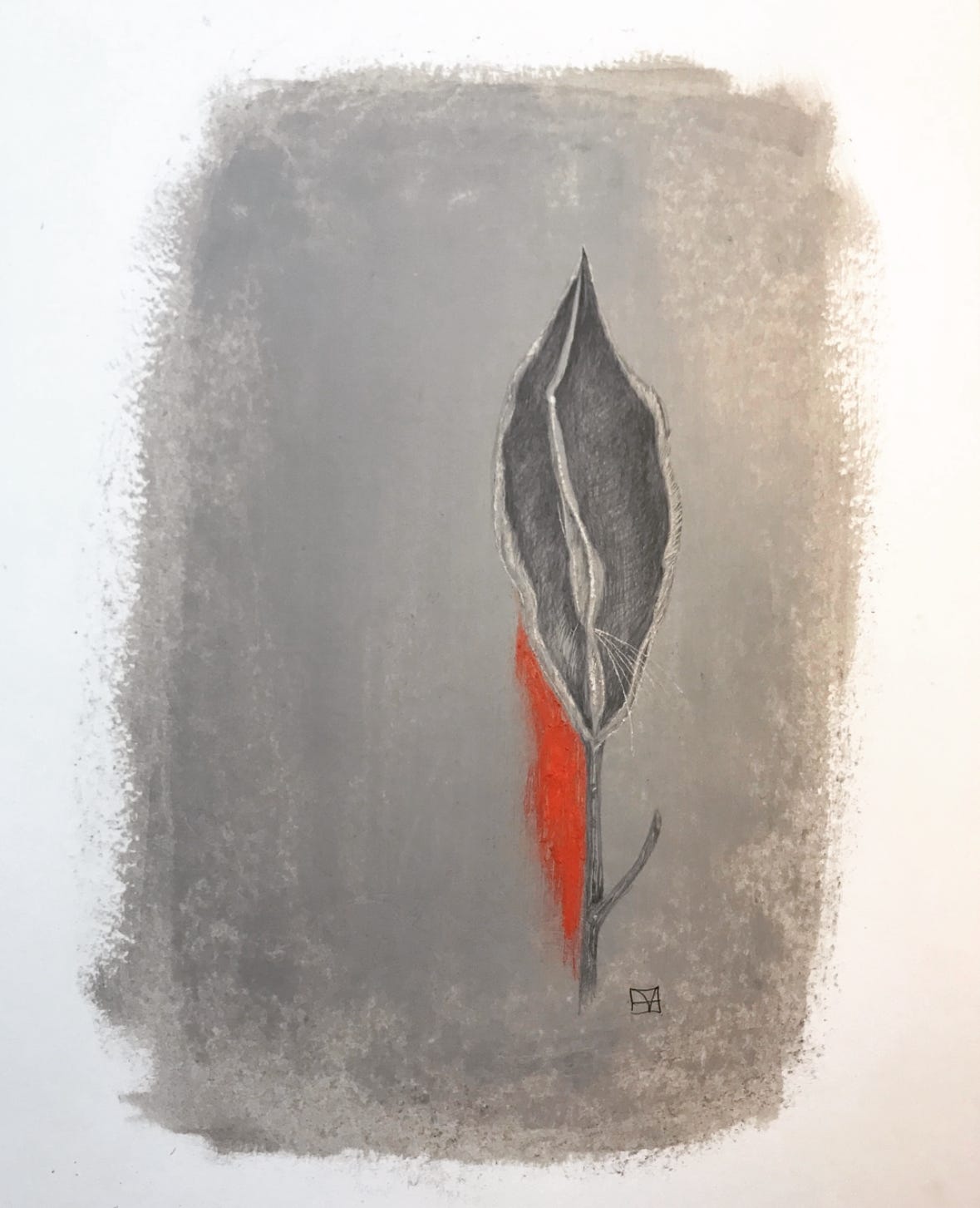
In front of my desk-window perch there is a grouping of milkweed, flowers now fading; the spiny cucumber-like pods beginning to form. As autumn approaches the leaves will wither and only the fully-grown, spiny seed-pods will remain. I will cut a couple of stems to bring inside and as soon as I do the plant will ooze a milky substance, not only from the place where it was cut, but even from the pods. I find it symbolic that the plant weeps its milk when cut. It has a practical purpose though; the milky substance is poisonous to all living creatures except for a few insects that thrive only on milkweed, and also the monarch butterfly caterpillar. The caterpillar eats the leaves and ingests the poison making it distasteful and harmful to predators; an amazing natural defense system. Inside the milkweed pods there is another wonderful surprise. The fluffy white floss that is attached to flat brown seeds helps the seed to be dispersed by wind. Long ago it was also used by native cultures to stuff pillows, mattresses, and quilts and was carried as tinder to start fires. For such a common plant that grows humbly in fields and along roadsides and goes unnoticed when not in bloom, there are so many amazing things to discover about it. When I researched it further I learned that during World War II, the regular material used to stuff life jackets was in short supply, so milkweed floss was called for as a substitute, because it is about six times more buoyant than cork. Remember that the next time you encounter this plant. Incredible. I draw and paint this plant often. I never tire of its intricacies.
In high summer, not far from my driveway, there are masses of jewelweed, sometimes called touch-me-not, Latin binomial Impatiens capensis. There is nothing flashy about the jewelweed plant, with its small, trumpet-shaped orange flowers and rather plain foliage, but it is a miraculous and prolific plant. One thing to know is that it often grows near poison ivy, which can warn you to be careful where you wander. The interesting thing is that the juice of the jewelweed plant is a natural antidote to the poison ivy rash. It can also be used preventatively by applying the juice to exposed areas of skin; it forms a natural protective barrier to poison ivy. The most fascinating thing about jewelweed can only be experienced when you get up close and personal with it. Even the lightest touch of your finger against its seed pods will send it shuddering and exploding its seeds into your hand. You can eat the seeds, too; they taste like walnuts. We’ve had fun over the years as we walk by it, playing with the spitting pods, in awe at such a clever plant. What an ingenious way to scatter seed and reproduce. A bird or animal brushes by, and with the lightest caress the tiny seeds are shot out onto the soil. Beautiful, wondrous nature. Oh, and if you submerge the leaves of the jewelweed plant in water, the undersides will turn a shimmering silver. The leaves are also water-repellant, which is how the plant got its name. When it rains, the droplets form perfect spheres and the plant looks as if it’s covered with tiny diamonds.
Is it strange to feel reverence and awe over such ordinary things as milkweed, hummingbirds or spitting jewelweed pods? For me, the discoveries made while paying close attention to the world around me are the impetus to a creative and fulfilling life and allow me to keep faith that real beauty matters and that in the end goodness might prevail. These small delights connect me to not only the natural world, but to other people, because I want to share them and I take such joy when others share them with me. It’s good medicine, reverence and awe. Don’t you think? What is the last thing you looked closely at that truly amazed you? I would love for you to tell me, so that I can be in awe, too.





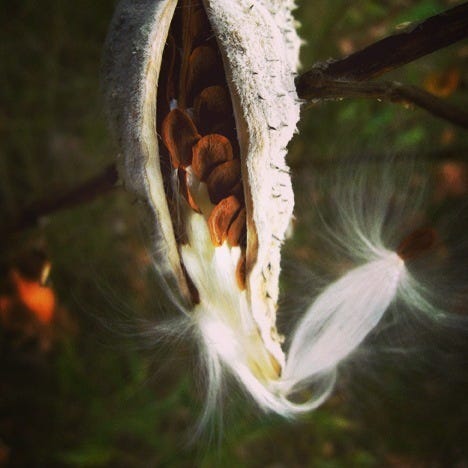

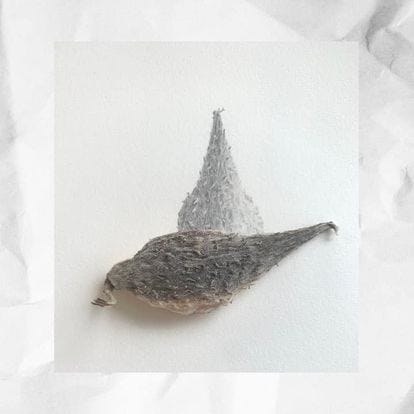
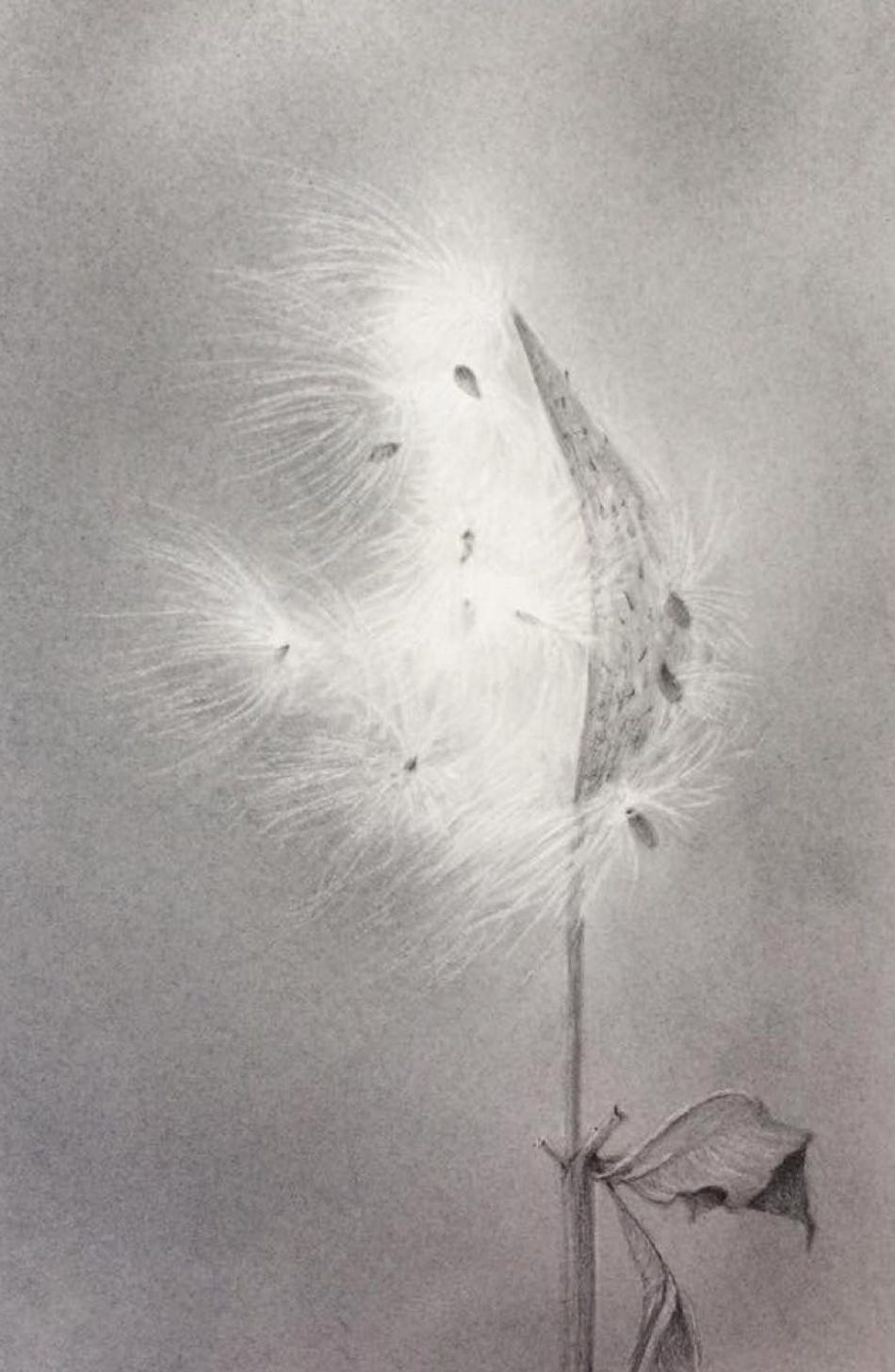
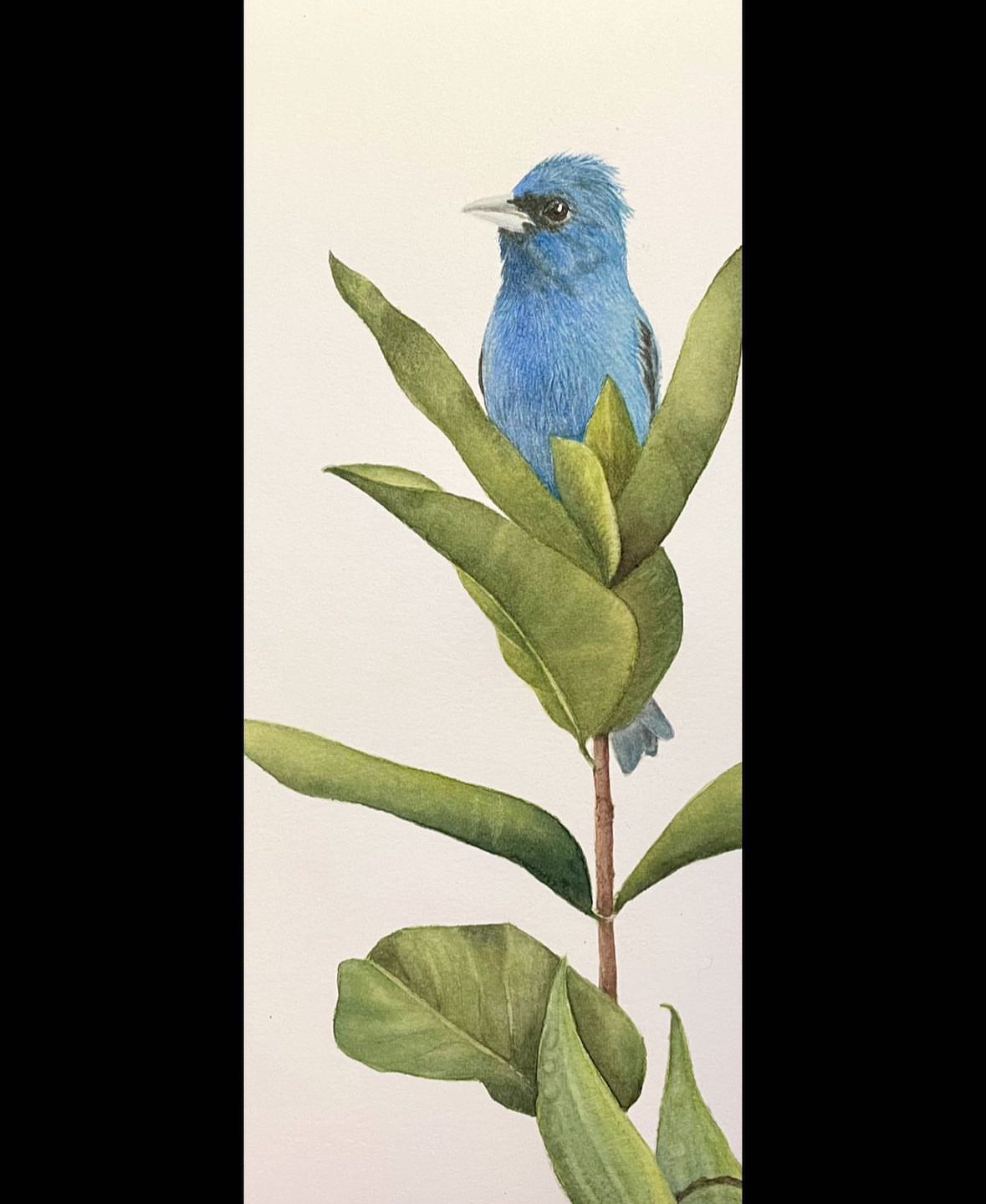
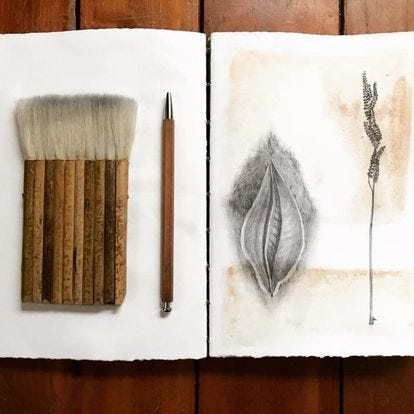
Thank you for such a morning prayer. By the time I finished reading it my heart had swelled to twice its size. To know our world so intimately is a special grace.
I needed this today. Noise clutters my thoughts and heart as of late. Reading your post was like gently pushing aside the brush and stepping into a quiet clearing where only the cicadas’s soundtrack is there to greet me. Thank you, friend. And your beautiful drawings are always a balm for my heart. 💗